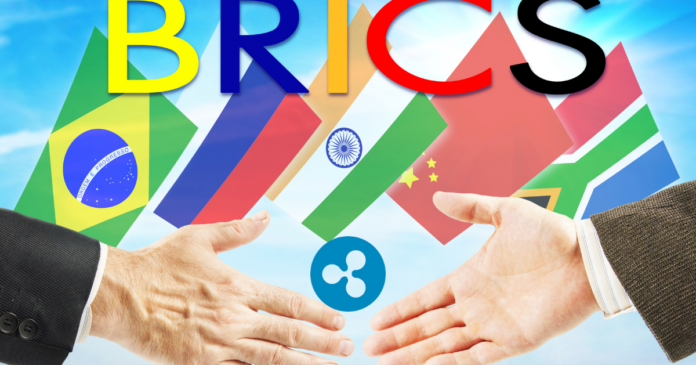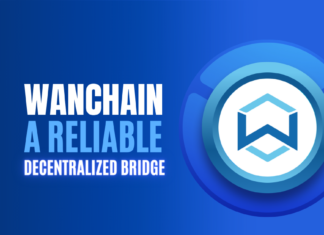While the BRICS acronym is a familiar term denoting a group of five major emerging economies. Brazil, Russia, India, China, and South Africa. Its connection with the blockchain sphere, particularly XRPL, has piqued the curiosity of many.
To understand this unique partnership, we must delve into the documents, discussions, and aspirations that have brought BRICS and XRPL, Ripple’s blockchain, together.
BRICS: A Collective Endeavor for Economic Cooperation
The BRICS alliance represents a concerted effort to establish a platform for economic cooperation and strategic dialogue among its member nations. The concept was coined in 2001 by Goldman Sachs economist, Jim O’Neill, to describe the emerging markets that were poised to reshape the global economy. Over the years, BRICS evolved from an acronym into a collaborative force, fostering discussions on economic policy, development, and cooperation.
The rise of the BRICS pic.twitter.com/PNGpChvXSF
— Sprinter (@Sprinter99800) August 23, 2023
In its foundational documents, including summit declarations and joint communiqués, BRICS emphasizes key principles like respect for sovereignty, non-interference in the internal affairs of member states, and a commitment to a multipolar world. These documents typically revolve around topics such as trade, investment, technology, and sustainable development.
BRICS and XRPL: A Surprising Convergence
Surprisingly, within the realm of these documents, a unique convergence with blockchain technology, particularly Ripple’s XRPL, becomes apparent. The mention of XRPL within BRICS documents reflects an acknowledgment of the potential of blockchain technology to reshape the global financial landscape. This recognition indicates that the member nations of BRICS perceive blockchain as a strategic enabler for enhancing financial systems, fostering transparency, and promoting efficient cross-border transactions.
🚨BRICS JOURNAL OF ECONOMICS mentions $XRP, #XRPL and DLT in paper📄 about DE-DOLLARIZING.
👇🏻 pic.twitter.com/9MgLvX9uLS— EDO FARINA 🅧 XRP (@edward_farina) August 20, 2023
While the specific extent of involvement and collaboration may not be explicitly detailed, the mere inclusion of XRPL in the documents signifies a shared interest in exploring and harnessing the capabilities of blockchain technology. This inclusion can be interpreted as an indication of the member nations’ willingness to embrace innovation and digital transformation as a means to strengthen their economic ties and global influence.
Ripple’s XRP Ledger (XRPL) stands out in the blockchain space due to its focus on facilitating real-time, cross-border transactions with minimal fees. Unlike traditional financial systems, which can be slow, costly, and subject to intermediaries, XRPL’s decentralized nature allows for seamless peer-to-peer transactions, enabling faster remittances and lower fees. So, the integration of XRPL technology could potentially streamline trade and investment between BRICS member states, promoting economic growth and collaboration.
The Potential Benefits of BRICS-XRPL Collaboration
- Enhanced Financial Integration: The adoption of XRPL could potentially lead to enhanced financial integration among BRICS nations. The ability to settle transactions in real-time and with reduced fees could incentivize increased trade and investment, benefiting both economies and populations.
- Reduced Dependence on Intermediaries: XRPL’s decentralized nature could help BRICS nations reduce their dependence on traditional financial intermediaries. Enhancing financial sovereignty and security.
- Blockchain-Based Identity and Security: Blockchain technology can be used to establish secure digital identities. Reducing fraud and enhancing the efficiency of cross-border transactions. This could have profound implications for remittances and international trade within the BRICS bloc.
- Innovation Ecosystem: Collaborative exploration of XRPL could pave the way for innovation hubs and startups within the BRICS nations. Positioning them at the forefront of blockchain-based technologies and solutions.
- Promotion of Multipolarity: Embracing blockchain technology aligns with BRICS’ vision of a multipolar world. By reducing the influence of traditional financial powerhouses, member states can assert more control.
✅ On the XRP Ledger, automatic royalties for NFTs are enforced at the chain protocol level and creators are NOT at the mercy of individual marketplaces.
With XRPL, token issuers’ rights are protected. https://t.co/h1zaHf9S2L
— Emi Yoshikawa (@emy_wng) August 18, 2023
Conclusion
The relationship between BRICS and Ripple’s XRPL underscores the dynamism of international collaboration in the modern era. While the extent of integration remains to be fully realized, the mere mention of XRPL within BRICS documents reflects a shared interest in blockchain technology’s potential. To transform financial systems, increase efficiency, and bolster economic cooperation.
The convergence of BRICS and XRPL serves as a testament to the member nations’ openness to innovation and digital transformation. This collaboration has the potential to reshape global trade, and foster financial inclusion. And empower emerging economies to play a more influential role on the international stage.
⬆️ For more cryptocurrency news, check out the Altcoin Buzz YouTube channel.
⬆️ Our popular Altcoin Buzz Access group generates tons of alpha for our subscribers. And for a limited time, it’s Free. Click the link and join the conversation today.




























